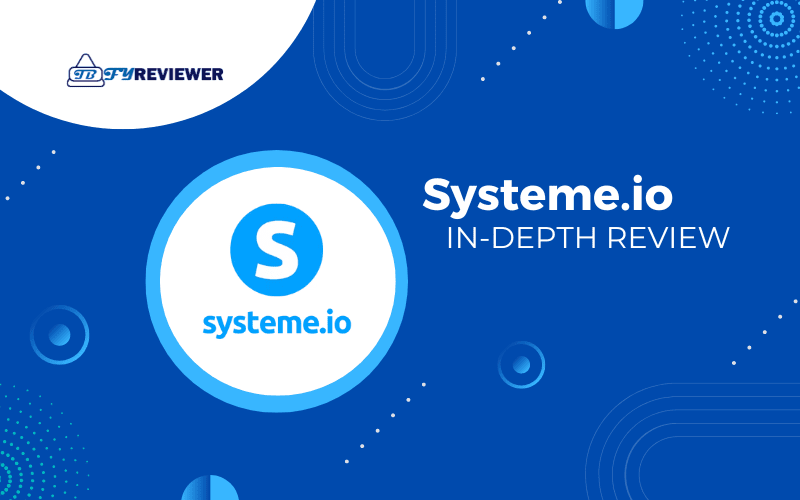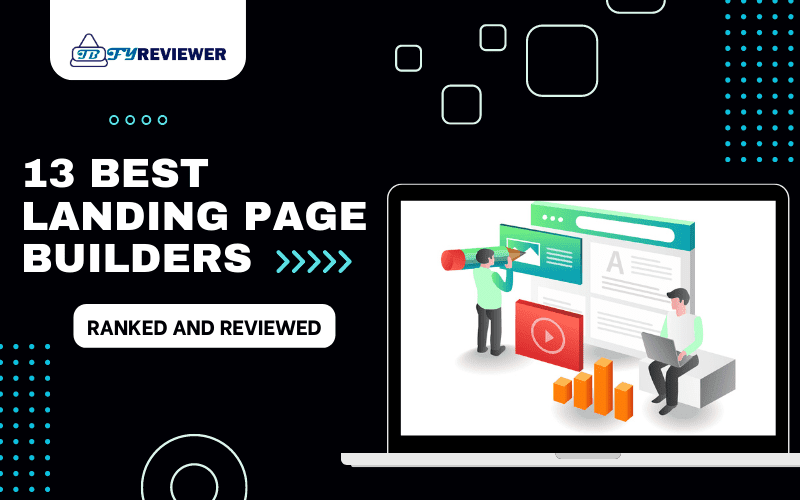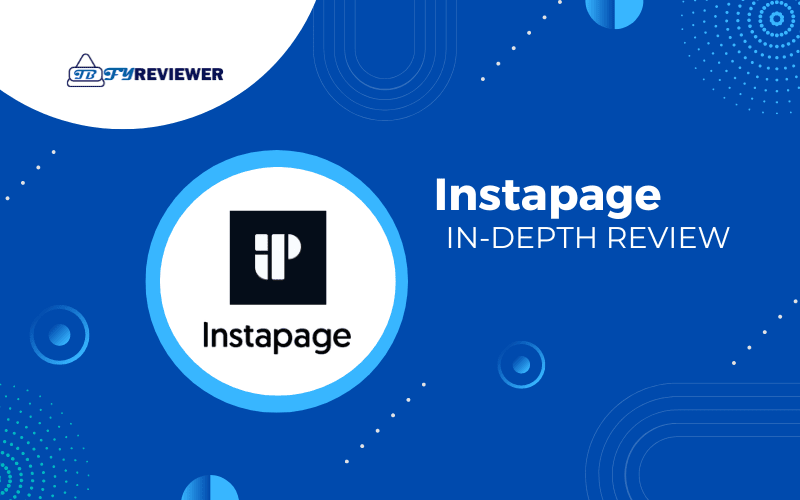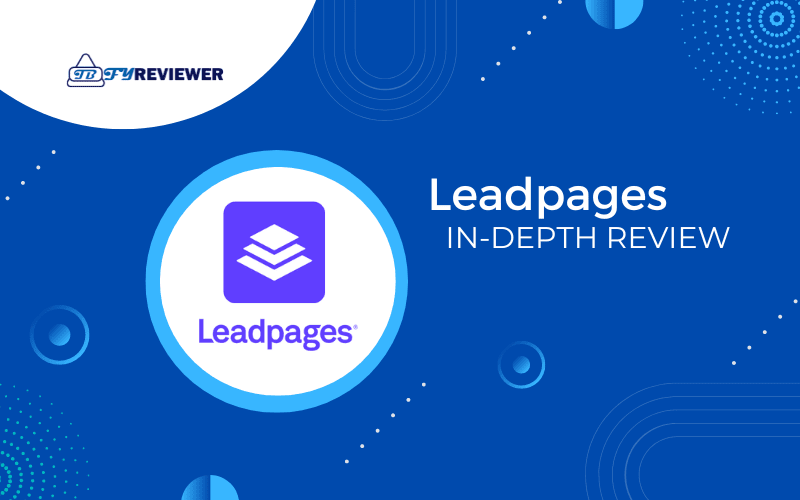Join TbfyReviewer’s newsletter to receive every new article.
How To Create A Landing Page Without A Website
Hossam jamjama
- May 31, 2023
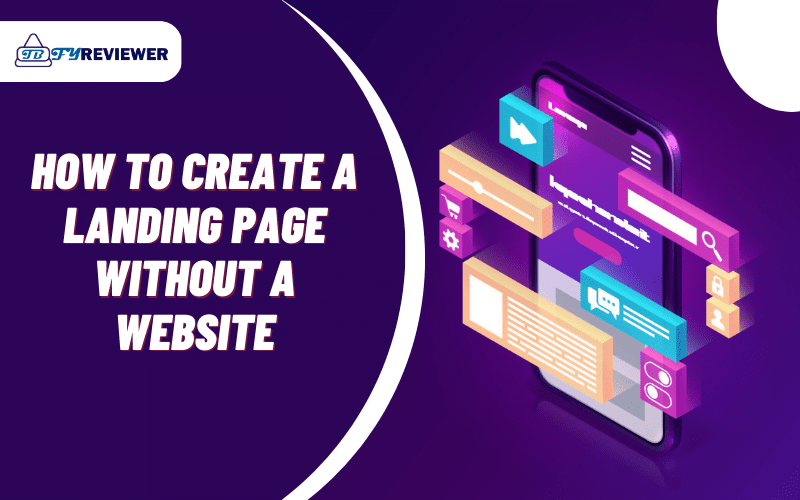
If you’re an entrepreneur or marketer working to create a landing page but don’t yet have a website, you’re in the right place.
Creating an effective landing page is crucial for converting leads into customers, and according to HubSpot, it’s the second most important goal for any business (after increasing traffic).
However, designing a standalone landing page can seem daunting without prior website experience.
That said, there are a variety of methods available to help you develop an effective landing page without a website.
In this guide on how to create a landing page without a website, we’ll explore tips and tricks to help you overcome the challenge.
Whether you’re looking to generate leads or increase conversion rates, keep reading to learn how.
Understanding Landing Pages
Before delving into how to create a landing page without a website, it’s essential to understand what they are and how they differ from websites.
What is a Landing Page?
A landing page is a specific page on which visitors land after clicking on an ad, search engine result, email link, or social media post.
The primary objective of this page is to convert visitors into leads or potential customers by offering them something valuable in exchange for their details (for example, access to an e-book or a discount code).
Typically, the landing page has no external links except the call to action button that directs the user toward the next step.
Difference between Website and Landing Page
A website is typically composed of several pages designed to provide comprehensive information about your business.
Conversely, a landing page typically has only one goal – converting the visitor into a lead or customer.
Unlike websites that offer multiple navigation options, landing pages have no distractions such as menus or links that can take away the visitor’s attention from the main call-to-action (CTA).
A website is essentially your company’s online home, whereas a landing page is like an interactable marketing brochure.
Benefits of Creating a Landing Page Without a Website
Creating landing pages without a website comes with numerous benefits:
Cost-effective
Building and maintaining a website requires substantial resources. However, creating standalone landing pages can be significantly less expensive and does not require as much time and financial investment as building and maintaining websites.
You don’t need to pay for hosting fees since you can host your landing pages on free websites like WordPress or Wix.
Also, you can use free templates or create your own through various web hosting platforms like Carrd and LeadPages.
Easier to set up
Designing and launching a website can take weeks or even months before going live. In contrast, creating landing pages takes less time and is more straightforward.
Landing pages are simpler; users generally operate from visual interfaces utilizing drag-and-drop tools that provide templates optimized for conversions.
All you need is a landing page builder, copy, and imagery to create a high-converting landing page.
You can start building traffic and collecting leads
Even without a website, you can leverage social media, email marketing, or online advertisements to draw traffic to your landing pages.
You can include an embedded sign-up form on your landing pages that capture leads’ contact details even before creating the final website.
These leads you can nurture using email marketing campaigns or social media channels.
By having an independent landing page, you can target qualified leads that offer generous conversion rates, capturing vital information such as names, emails, and company roles.
Types of Landing Pages
There are various types of landing pages that you can create without having an existing website.
Confirmation Page
A confirmation page is typically used to thank visitors for taking specific actions like filling out a form or subscribing to a newsletter.
These pages often have a message acknowledging that the action was successful, further encouraging visitors to take additional steps.
Usually used for offline events promotion, the confirmation page serves to create engagement with attendees early on in the registration process by thanking them for registering before the event.
Squeeze Page
As the name suggests, squeeze pages aim to “squeeze” as much information from visitors as possible. They usually offer something valuable in return for contact information such as an e-book or free trial.
These pages are effective in creating leads lists for future marketing efforts.
Product Launch Page
Perfect for new products or services, this page seeks to make users aware of your offering and provide details on how it works and what makes it unique.
Its primary call-to-action is usually a “pre-order now” button or design akin, allowing initial sign-up interest.
Elements of an Effective Landing Page
Creating high-converting landing pages involves several essential elements:
Compelling Headline and Subheadline
The headline is arguably the most critical element of any landing page since it’s the first thing visitors see.
A headline serves to capture attention immediately; it aims to draw visitors in by answering any queries they may have about your offer instantaneously. A good headline should be catchy, evoke emotion, and communicate exactly what visitors can expect from your offering.
The subheadline supplements a headline further fleshing out its statement.
To incorporate your target keyword phrase, consider wording variations such as “easy steps” or “effortless procedure”.
Use Emotional Triggers
Emotional triggers can help create urgency and conversion on your landing pages.
Emotions like fear, envy, and hope drive people’s decision-making processes. Incorporating these elements into your copy can increase the likelihood of a visitor taking your desired action.
Also, headlines should utilize terms like “discover,” “learn,” or “uncover” to create excitement.
In contrast, subheadings should serve as a highlight reel of some added promotional sentiment referencing the value obtained at your landing page’s core.
Visual Content
Images and Videos can significantly enhance a landing page’s effectiveness by increasing engagement and retention.
Visual content can also help convey information more effectively, leading to better results.
Including compelling visuals provides a quick way to communicate with visitors when lacking ample copywriting space.
You will also enhance your search engine visibility by providing alt texts descriptions improving engagement while lowering your bounce rate.
Images and Videos
Select imagery and videos with care. Choose high-quality, appealing visuals to make a first impression with visitors that increase conversion rates and provide accessibility where necessary.
Benefit-Oriented Copywriting
Content writing for landing pages is all about creating interest and expectation of value rather than forcing someone into making a purchase.
You ought to write persuasively using short sections or bullet points addressing not just the benefits but clarifying how they produce gains for prospects.
The copy should highlight the benefits of your product or service rather than the features. Visitors are often more interested in what they can gain from using your product or service than how it works.
Emphasize the Benefits, not the Features
Rather than describing specific features in detail, emphasize how those features benefit visitors when they use your product or services. People need to know how they will solve a particular problem before making a purchase.
Use language focusing on solutions rather than on technical terms comparing them with competitors.
The highlights of your copywriting should address what are you offering that adds more benefit than other marketers/industries.
Call-to-action (CTA) Buttons
CTAs are essential components of any effective landing page. They are vital since they guide visitors toward the action you want them to take.
If visitors don’t know what action you expect them to take toward your conversion goal, they’re less likely to do so. So, a well-placed CTA results in a higher conversion rate.
CTA buttons should be highly visible, easy to find, and represent the desired conversion action.
You can test different placements, colors, designs, sizes, and text activities based on user experience.
Placement and Design
The placement and design of CTAs can affect conversions on your landing pages significantly.
Experiments have shown that placing CTAs above the fold usually gets higher click-through rates (CTR).
Place CTAs in visible areas such as the center of the page or alongside text that talks about its purpose.
Ensure it features a strong call-to-action backed up by color contrast elements to distinguish its presence from other page images.
The Step by Step Guide to Creating a Landing Page without a Website
Creating landing pages without an existing website is relatively simple and can be done by following these steps:
Determine Your Marketing Goal
Before creating a landing page, determine what specific marketing goal you want to accomplish with it. Outline what your expectations from the landing page are.
Are you trying to capture leads? Do you aim to promote a seasonal event?
Be it lead generation or increase conversion rates or event promotion.
Choose a Platform for Your Landing Page
Selecting an effective landing page builder platform is critical when creating high-converting landing pages.
Popular options include Unbounce, Instapage, and Leadpages.
Some popular website builders also offer free landing page templates.
Check out our list of the best landing page builders, both paid and free options, and choose the right one for you.
Select Your Template or Start From Scratch
Most landing page builder platforms have numerous templates you can use as a starting point.
Choose one that’s closest to meeting your requirements to speed up the process.
Using templates for structure provides an easier time creating custom content without extensive HTML coding.
Custom templates enable unprecedented creativity in design, but always make sure to keep it professional.
Customize Your Template
Once you’ve selected your template, customize it with your copy, images or videos, and branding.
Changing elements of the chosen template allows you to highlight what separates your offer from other marketers.
Be sure to adhere to best practices when customizing your template, including having a responsive design and optimized images.
However, beware of customization overdose; over-exaggeration directs attention away from text and images requiring significant redesign.
Write Your Copy
Clarity and Action-oriented copy enhancing landing page relevance addressing customer intents requires promotion-oriented keywords.
A well-crafted copy can increase conversions on your landing page significantly.
Use language that resonates with your audience and highlights the benefits of your offering.
The copy should lead visitors towards taking the desired action.
Remember that the importance of past research can not be understated at this stage as good writing is subject to detailed comprehension.
Add Visual Content
Images or videos can elevate the impact of your landing page by making it visually appealing. Incorporate multimedia content that supports and adds context to the copy.
Visually optimizing images build on user experience accessibility. High-quality imagery such as colorful backgrounds or subtle forms of animation contribute to maintaining customers’ attention spans.
Optimize for SEO
Optimizing for Search Engine Optimization (SEO) is critical in ensuring search engines crawl and rank your landing page sufficiently.
Use relevant keywords in headings, meta descriptions, and image alt tags.
Optimization ensures easy identification and conversion of traffic precisely targeted towards your services is funneled in.
Set Up Your Domain and Hosting
Although hosting is not necessary when creating standalone landing pages, setting up a custom domain can lend an air of professionalism to your landing pages.
The integrated website makes targeting specific URLs much easier without having to resort to poorly optimized short links.
Publish Your Landing Page
Before launching, test your landing pages across various devices to ensure they look great on different screens.
Include various features logically signposting your visitors giving them a clear incentive for any actions necessary in exchange for lead conversions.
Once everything checks out, publish it!
Best Practices in Creating a Landing Page without a Website
Creating high-converting landing pages involves adhering to several best practices:
Keep It Simple
Creating landing pages with a simple layout promotes readability and keeps clarity in focus for attracting a wider audience.
Too much clutter confuses visitors’ attention where there ought to be focus on CTA incentives for lead conversion.
Landing pages should be simple and straight to the point – no complex menus or links that distract visitors from taking action.
Mobile Optimized
Mobile devices generate a significant portion of internet traffic. As such, landing pages must be optimized for mobile devices to cater to this massive demographic.
Use Responsive Design in your mobile-optimized displays adjusting different browsers and apps catering to mobile device interaction rather than solely web-related activity.
Do A/B Testing
A/B testing enables you to optimize your landing pages continually.
Test various landing page elements like CTA buttons, copy, and imagery placement, among others.
It ensures better optimization after addressing significant concerns raised.
Test Different Elements of Your Landing Page
Testing various elements is crucial in optimizing the performance of your landing pages.
Headlines, subheadings, colors, CTAs, and free trials before opt-ins result in productive metrics breaking down visitor behavior to enhance the page’s overall functionality continually.
Conclusion
In conclusion, creating high-converting landing pages without a website may seem daunting, but it’s relatively easy if you follow the best practices outlined in this guide.
By integrating specific elements such as compelling headlines, emotional triggers, visual content, and CTAs, your landing page will become more effective in achieving your marketing goals.
With an efficient creation process from initial goal outlining to domain publishing, it’s possible to create an SEO-optimized platform geared towards higher conversion rates and core audience engagement.
So start putting these strategies into practice today to learn how to create a landing page without a website that drives results!
- Last Update OnMay 31, 2023
- ByHossam jamjama

Hossam Jamjama
Hey, it’s Hossam. I am a full time digital marketer & an online business owner. I write guides and in-depth reviews of the best SaaS products available. To help businesses make informed decisions about picking the right one for them.
Disclosure: TbfyReviewer is a participant in various affiliate programs, which means we may earn a commission when you buy something through links on our site at no cost to you if you decide to purchase a paid plan. You can read our affiliate disclosure.

